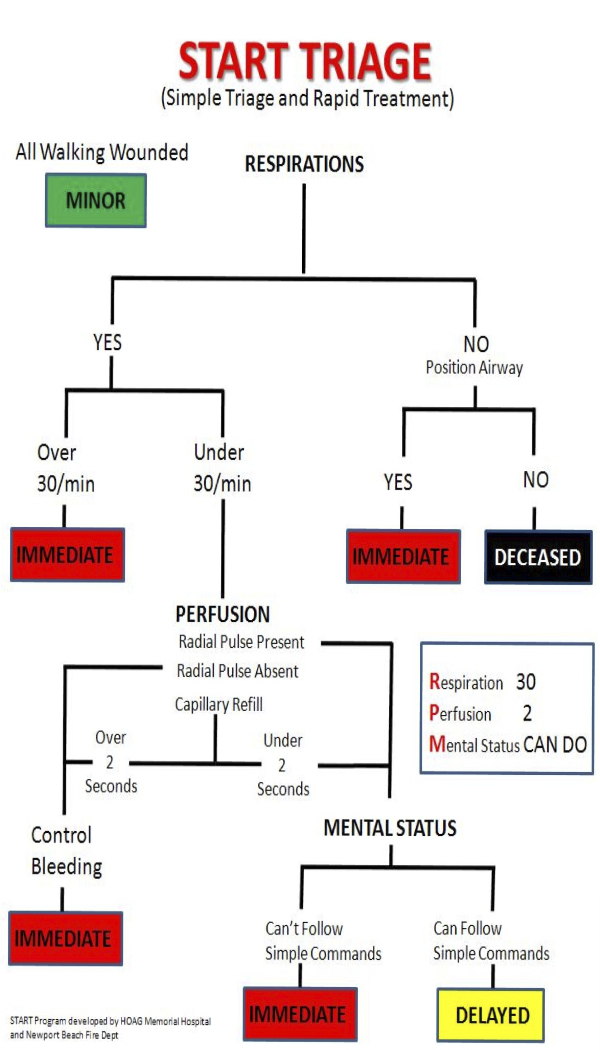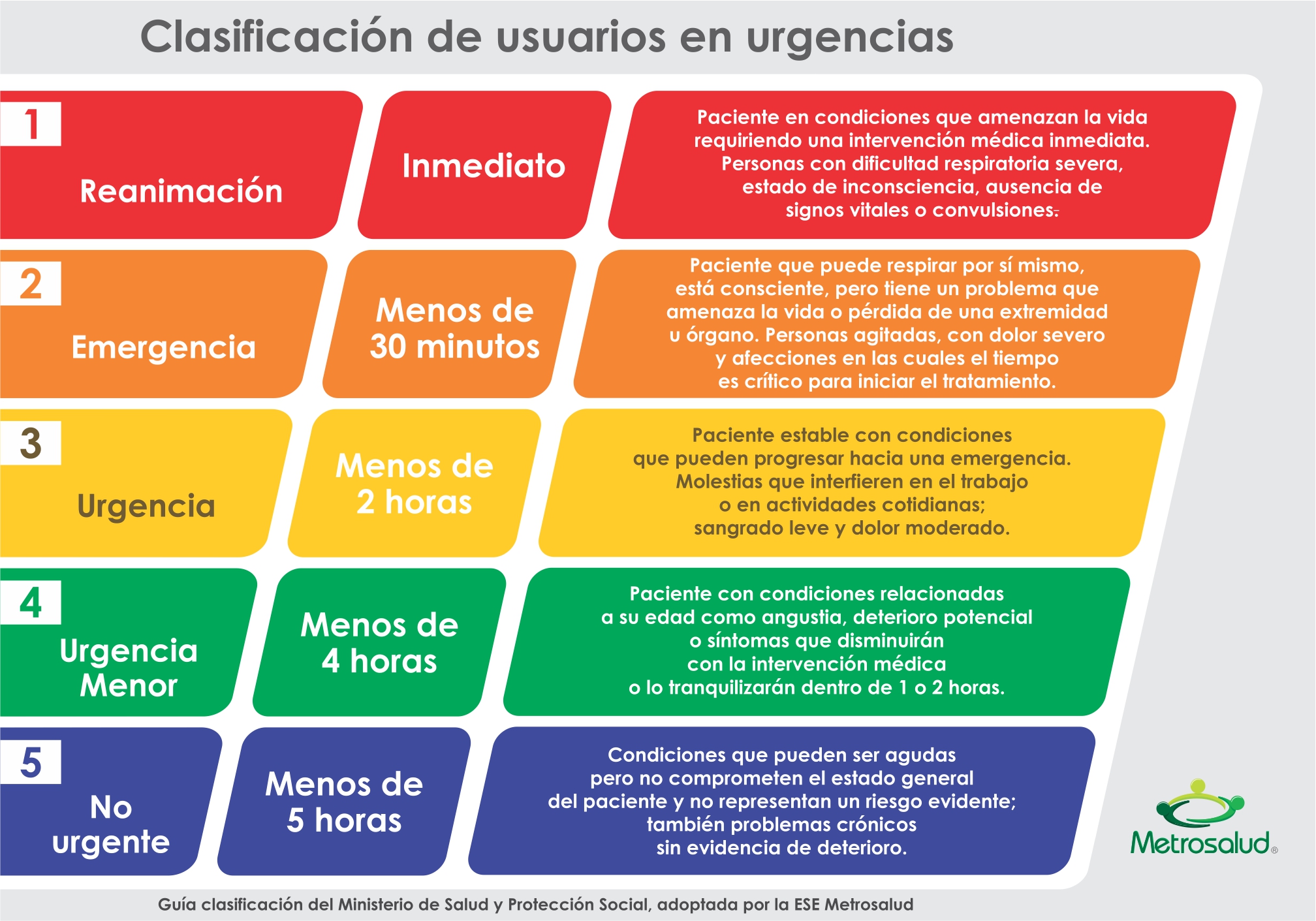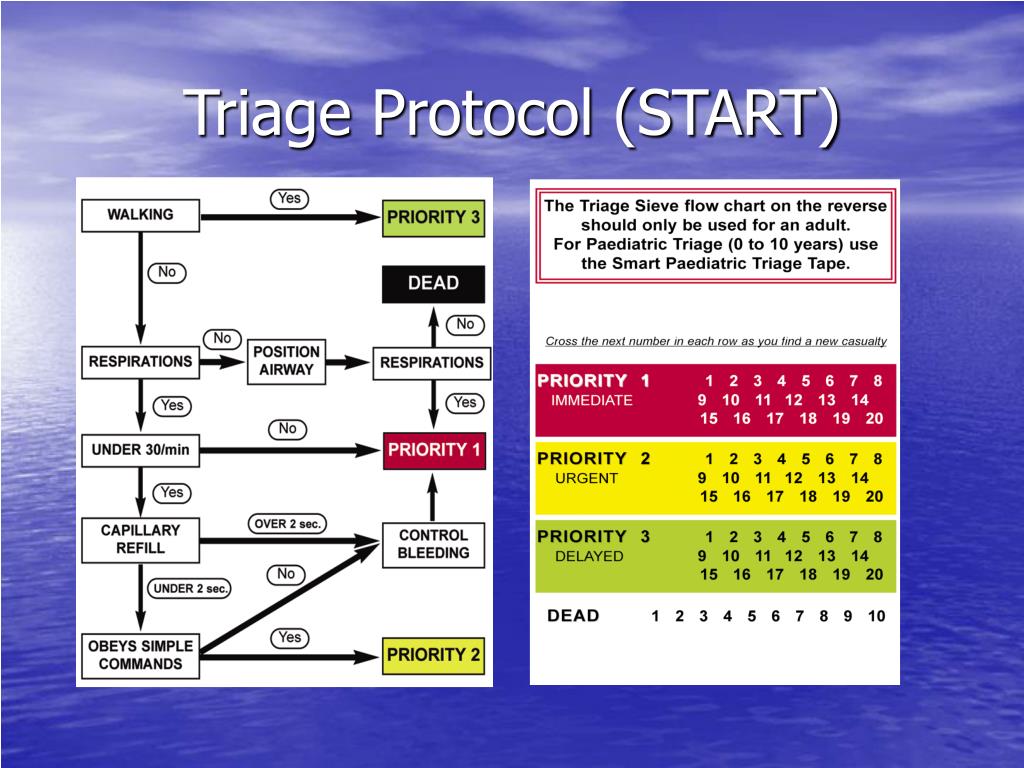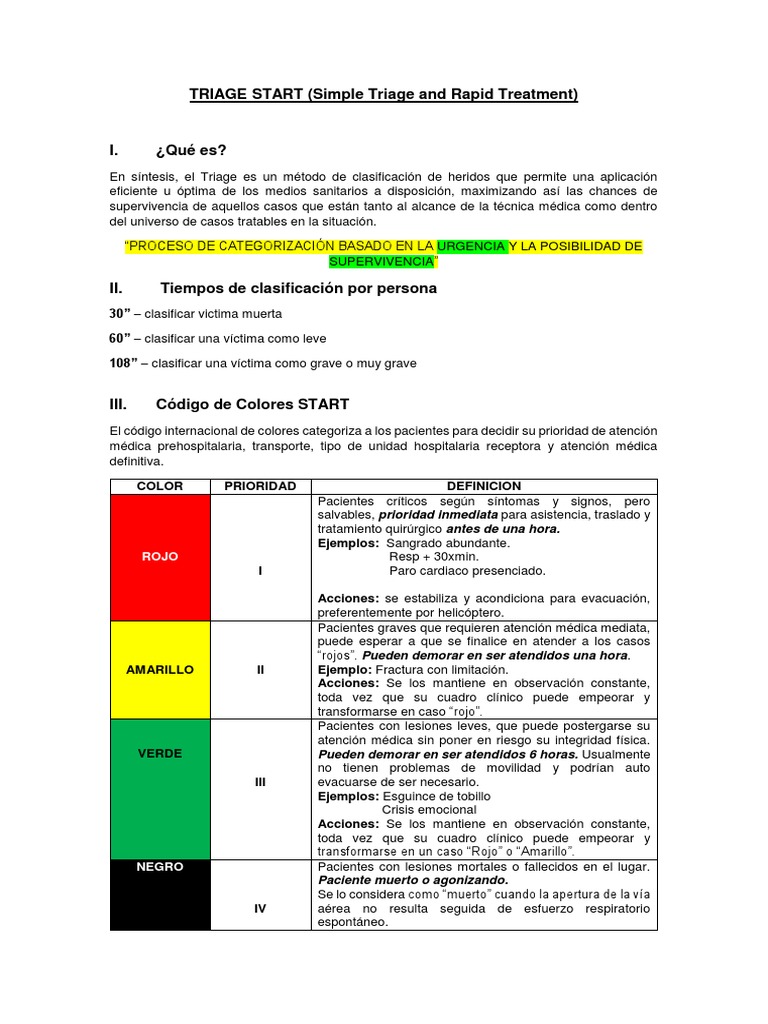
START Triage First Aid for Free
O START (Simple Triage And Rapid Treatment; Triagem Simples e Tratamento Rápido) é o método de triagem mais utilizado ao redor do mundo (G.Super et al,. 1994). É um método simples, rápido e sistematizado que se baseia na capacidade de andar, avaliação da respiração, circulação e nível de consciência.

Triage
START is a simple step-by-step triage and treatment method to be used by the first rescuers responding to a multi casualty incident. It allows these rescuers to identify victims at greatest risk for early death and to provide basic stabilization maneuvers. Revised 1/97. START Simple Triage And Rapid Treatment 3.

Método de Triage "START" Metodo, Apuntes, Atencion medica
The Simple Triage and Rapid Treatment (START) algorithm is a tool intended to help with patient triage after a disaster. In this systematic review, the authors searched for studies of the accuracy of the START method including the accuracy of its categories: red, yellow, green, and black in adults (≥17 years)..

Start triage
El método de triage START es una forma rápida y sencilla de evaluar a múltiples víctimas en situaciones de emergencia. Utiliza colores para clasificar a los pacientes según su gravedad. Se evalúan aspectos como la marcha, la respiración, la circulación y el estado mental.

24 TES Clasificación de las víctimas.
JumpSTART is an objective pediatric patient MCI triage tool developed specifically for the triage of children in the multi-casualty/disaster setting. JumpSTART was developed in 1995 to be used along with the START triage system and mirrors the structure. JumpSTART objectives: 1. Optimize initial triage of children in the MCI setting 2.

START Triage algorithm for adult patient. Adapted from... Download Scientific Diagram
Triage START. El triage START, siglas de Simple Triage And Rapid Treatment, o lo que es lo mismo, triage simple y tratamiento rápido, es uno de los métodos de clasificación de heridos más habituales en los servicios de emergencias españoles y también internacionales. Fue desarrollado en 1983, gracias a la colaboración entre el Hospital.

MÉTODO START DE TRIAGE / ARTICULO DE LUIS R. JIMENEZ GUADAMARRA LA HERMANDAD DE BOMBEROS
The radial pulse is located on the palm side of the wrist, between the midline and the radius bone (forearm bone on the thumb side). To check the radial pulse, place your index and middle fingers on the bump in the wrist at the base of the thumb. Then slide it into the notch on the palm side of the wrist.

Triaje Start
O que é o método START? Utilização do método START Como é a categorização das vítimas triadas? Após a categorização das vítimas, o que deve ser feito? Quando essas vítimas têm acesso ao tratamento definitivo? Quem pode classificar as vítimas de acordo com o método START? Existem outros métodos de triagem?

Algoritma Triage START PDF
The START group completed the evaluations in 15 minutes, whereas the non-START group took 30 minutes. The START group correctly triaged 94.2% of their patients, as opposed to 59.83% of the non-START group (P <0.01). Under- and over-triage were, respectively, 2.73% and 3.08% for the START group versus 13.67% and 26.5% for the non-START group.

START Triage Basics YouTube
The START Triage (Simple Triage And Rapid Treatment) protocol was designed to quickly assess victims of mass casualty, categorising them into four colour-coded groups that communicate the urgency of treatment. 1. Patients designated 'green' are the walking wounded; these individuals can move and follow commands. They should be directed to a.

ENGINE 74 CROSSFIT Start Triage
Simple triage and rapid treatment (START) refers to the triage method developed in 1983 by the Newport Beach Fire Department and Hoag Hospital in California. START is a triage method used by first responders during a mass casualty incident (MCI) to quickly and efficiently classify victims based on the severity of their injuries.

PPT SMART System & START Triage PowerPoint Presentation, free download ID1029683
The main purpose of this simulation of a multiple-casualty event was to compare the performance of 2 triage methods: the Simple Triage and Rapid Treatment (START) system and the Prehospital Advanced Triage Model (META in its Spanish acronym). The secondary objectives were to analyze times, order of evacuations, and appropriateness of treatments.

Triage Start Resumen Jasv Traumatologia Ciencias de la Salud
Simple triage and rapid treatment ( START) is a triage method used by first responders to quickly classify victims during a mass casualty incident (MCI) based on the severity of their injury.

Triage start 2014
Comparison of the Sacco Triage Method Versus START Triage Using a Virtual Reality Scenario in Advance Care Paramedic Students CJEM . 2016 Jul;18(4):288-92. doi: 10.1017/cem.2015.102.

2º GBM START SIMPLE TRIAGE AND RAPID TREATMENT (Triagem Simples e Tratamento Rápido)
Triaje Start Modificado: S.T.A.R.T modificado NYFD: Simple Triage And Rapid Treatment Modificated. En el año 2007 como consecuencia de una explosión de vapor de agua de alcantarillado de la ciudad de Nueva York, los bomberos y paramédicos del NYFD se enfrentaron a una situación compleja al tener que atender a 51 víctimas del siniestro.

START Triage » EMS Resources » UF Academic Health Center » University of Florida
After the attacks on September 11th, 2001, in New York City, ThinkSharp Inc. began developing a commercial, evidence-based and outcome-driven approach called the Sacco Triage Method (STM).4,6 It is the only method evaluated for National Incident Management System compatibility in the United States (US).4,6,7 STM uses a simple physiologic score t.